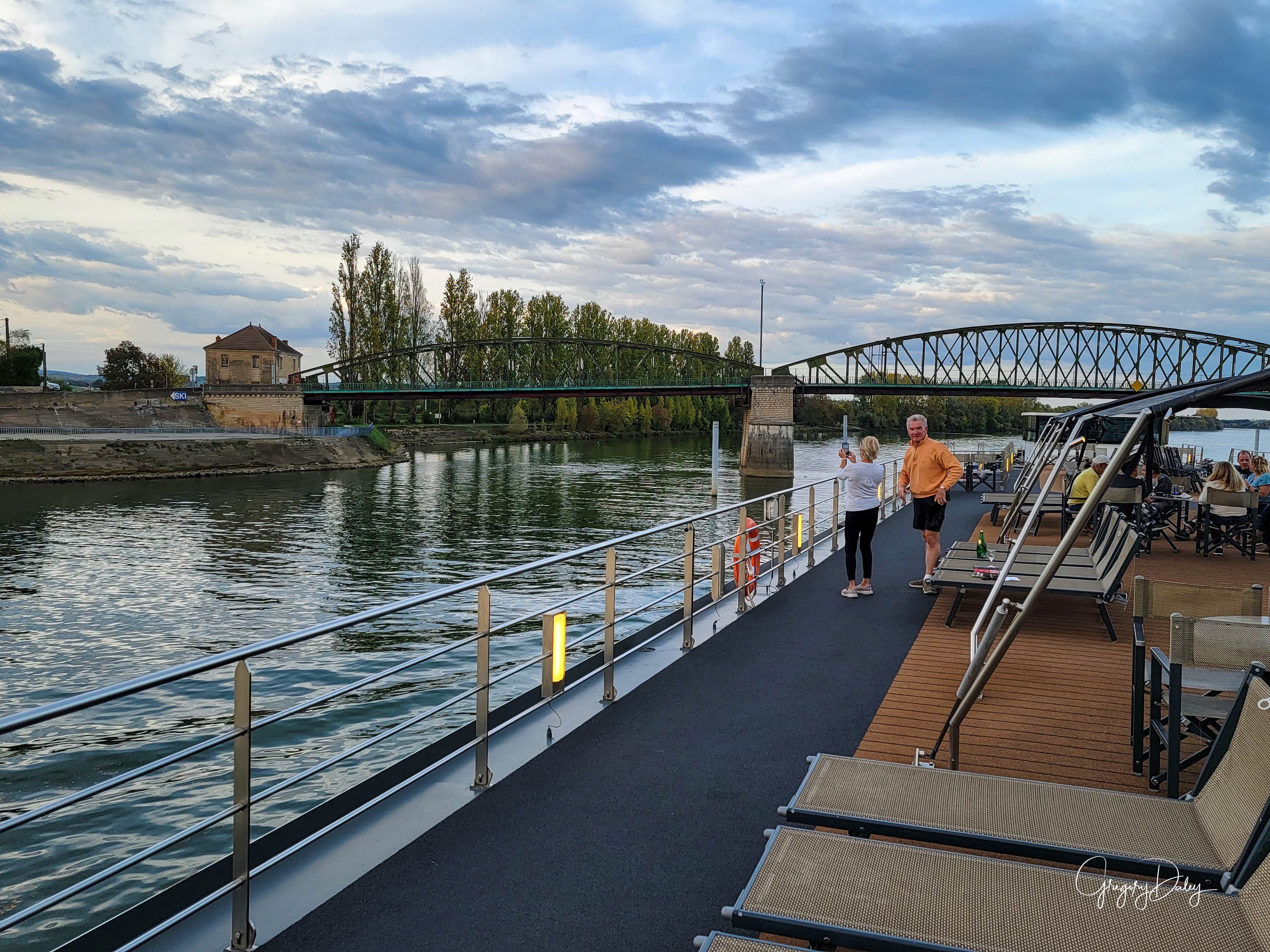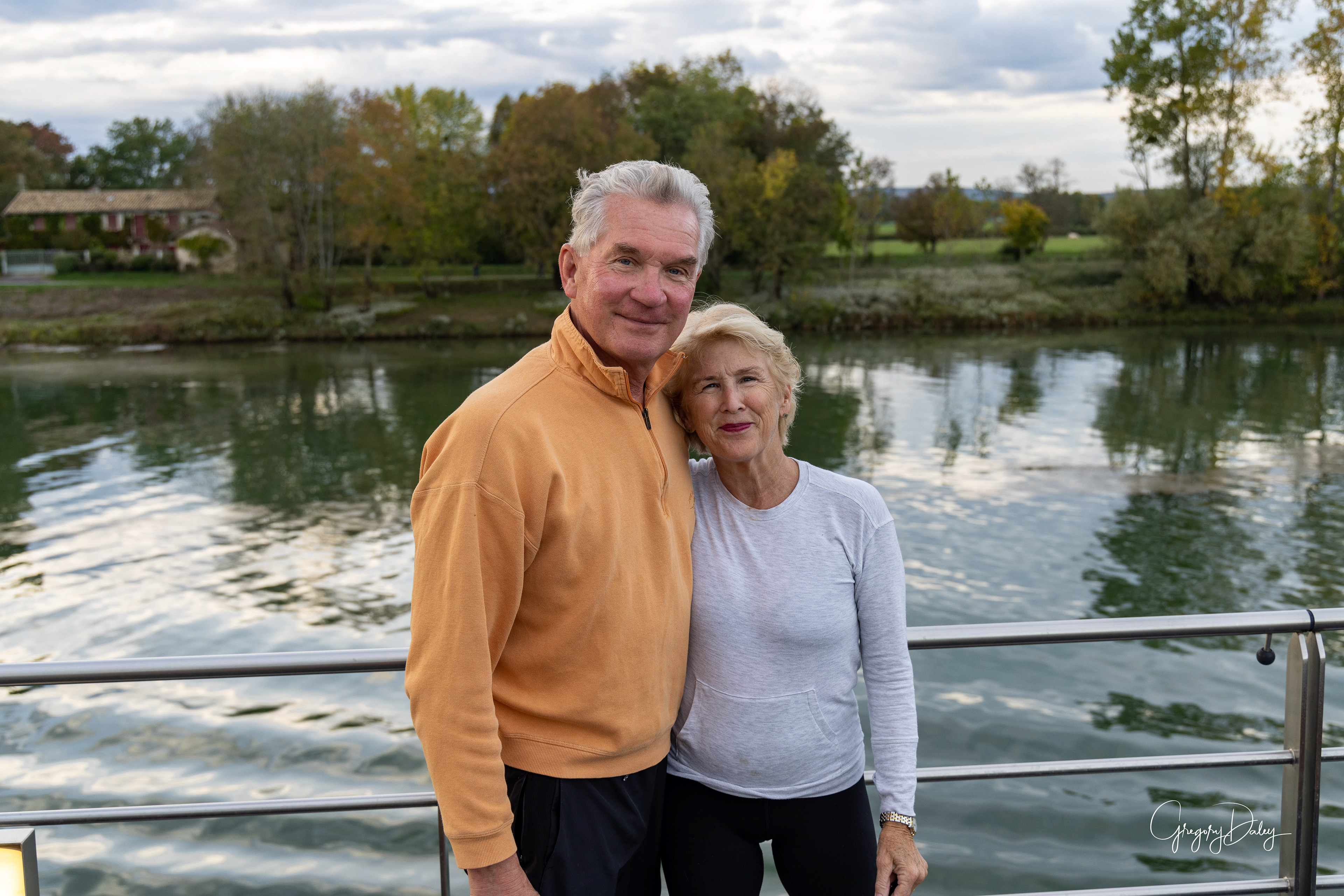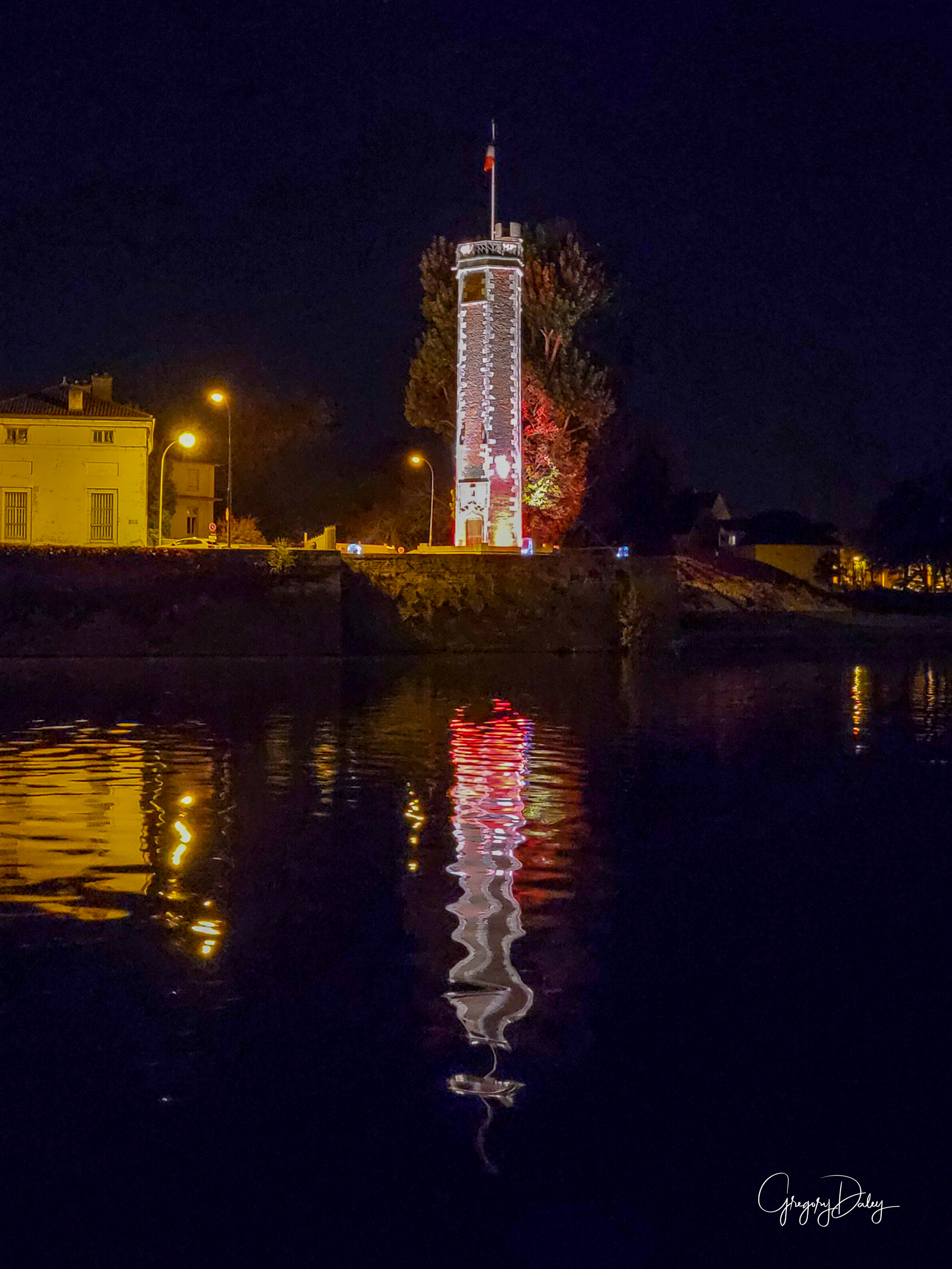











10/17, Day 8 of the tour We had a beautiful cruise up the Saône River. Chalon-sur-Saône lies in the south of the Bourgogne-Franche-Comté and in the east of France, approximately 34 mi north of Mâcon. It is located on the Saône river, and was once a busy port, acting as a distribution point for local wines which were sent up and down the Saône river and the Canal du Centre, opened in 1792. Though the site was a capital of the Aedui and objects of La Tène culture have been retrieved from the bed of the river here, the first mention of Cavillonum is found in Commentarii de Bello Gallico. The Roman city already served as a river port and hub of road communications, of the Via Agrippa and side routes. In 354 AD the Roman Emperor Constantius II stationed the Roman 7th Army in Chalon (then called Cabyllona) for an invasion against the brother kings, Gundomadus and Vadomarius of the Alamanni. However, not having received supplies, the Roman troops revolted, and were pacified by the grand chamberlain Eusebius with money. In Late Antiquity the city had dwindled so much that a wall round it encircled fifteen hectares. Saint Marcellus of Chalons (Saint Marcel) is said to have been martyred here in 179 AD. Chalon became one of the de facto capitals of the kingdom of Burgundy under Guntram, king from 561 to 592, who died here. Guntram also promoted the cult of Saint Marcellus. It continued to pay for its importance by being frequently attacked until the 10th century. The bishopric of Chalon-sur-Saône, a suffragan of the Archdiocese of Lyon, was also established here in the 6th century, and a Church Council was held here from 644–655. After the French Revolution, in accordance with the Concordat of 1801, the diocese of Chalon was amalgamated with the diocese of Autun, which gave the name to the new entity.











